#Sitting Bull Buffalo Bill
Text
Did Buffalo Bill invent the Wild West?
Buffalo Bill is often accused of having invented a fake Wild West in his shows but TV historian Tony McMahon begs to differ
You’ve heard of Annie Oakley, Calamity Jane, Chief Sitting Bull, and of course – Buffalo Bill. Those great heroes of the Wild West who created the United States of America. Frontier folk laughing in the face of danger. Battling the fearsome Sioux and Cheyenne. Free spirits living by their own code of honour at the expanding new frontiers of America. A tough life punctuated by gunfights and…

View On WordPress
#African American cowboy#Battle Little Bighorn#Bill Cody#Buffalo Bill#Buffalo Bill Edison#Calamity Jane#Cody Kansas#Cody scalping#Custer&039;s Last Stand#Edison cowboy films#General Custer#history#Sioux Cheyenne#Sitting Bull Buffalo Bill
2 notes
·
View notes
Text
Did Buffalo Bill invent the Wild West?
Buffalo Bill is often accused of having invented a fake Wild West in his shows but TV historian Tony McMahon begs to differ
You’ve heard of Annie Oakley, Calamity Jane, Chief Sitting Bull, and of course – Buffalo Bill. Those great heroes of the Wild West who created the United States of America. Frontier folk laughing in the face of danger. Battling the fearsome Sioux and Cheyenne. Free spirits living by their own code of honour at the expanding new frontiers of America. A tough life punctuated by gunfights and…
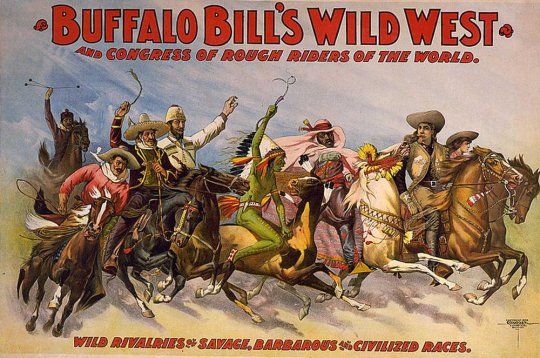
View On WordPress
#African American cowboy#Battle Little Bighorn#Bill Cody#Buffalo Bill#Buffalo Bill Edison#Calamity Jane#Cody Kansas#Cody scalping#Custer&039;s Last Stand#Edison cowboy films#General Custer#history#Sioux Cheyenne#Sitting Bull Buffalo Bill
0 notes
Text





I was beginnin' to think you didn't exist. But here you are in the glorious flesh and what a sight for sore eyes! Oh, you sure passed me by. Like plantin' a seed and watchin' it grow into a tree, too tall to climb. You got everything you ever wanted, my friend. You even got the President of the United States sleepin' in your bed, right now.
BUFFALO BILL AND THE INDIANS
or Sitting Bull's History Lesson
— 1976. dir. robert altman, cin. paul lohmann
#buffalo bill and the indians or sitting bull's history lesson#1976#robert altman#paul newman#burt lancaster#gifset
34 notes
·
View notes
Photo

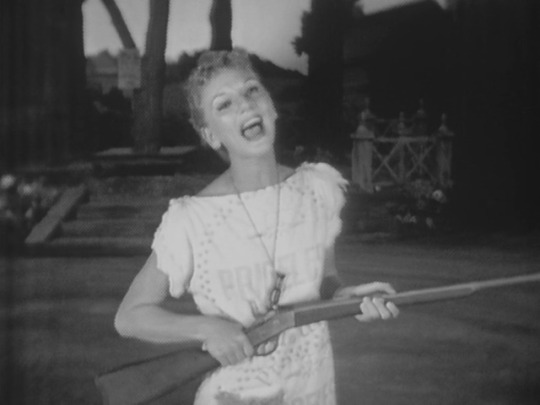

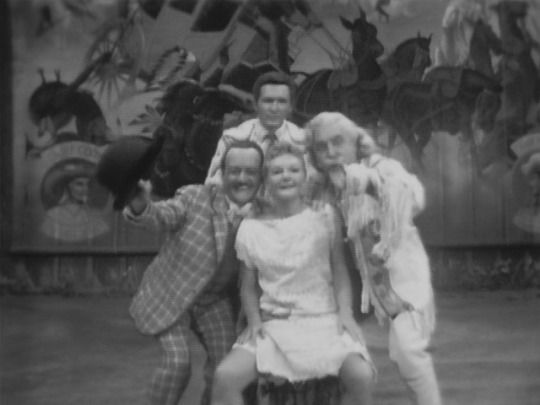

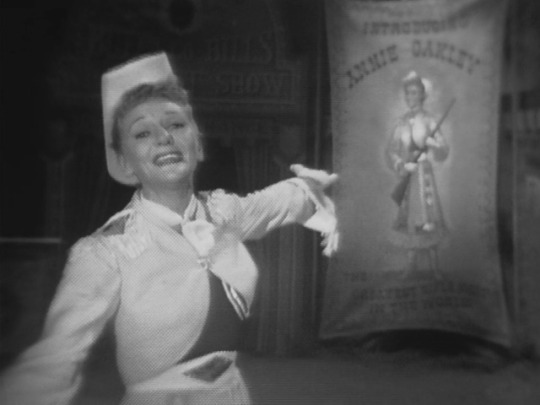
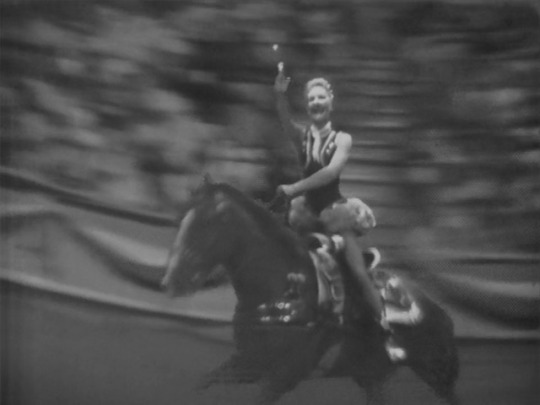
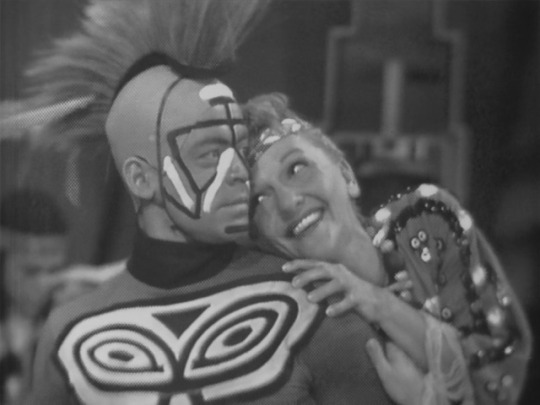

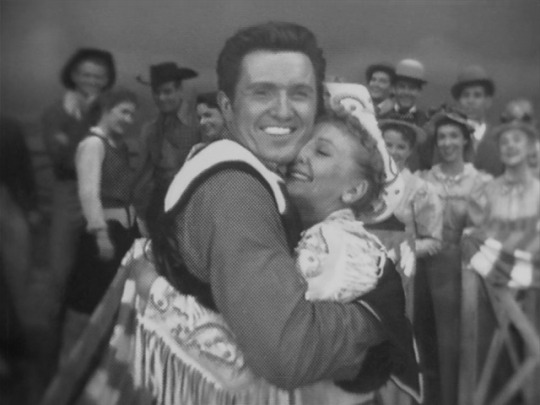
Annie Get Your Gun (1957, Vincent J. Donehue)
8/12/22
#Annie Get Your Gun#Mary Martin#John Raitt#Irving Berlin#musical#William O'Neal#Reta Shaw#Donald Burr#Zachary Charles#Norman Edwards#Susan Luckey#western#50s#live theater#Annie Oakley#Frank Butler#Buffalo Bill#Sitting Bull#show business#guns#sharpshooters#Native-American#rednecks#romance#battle of the sexes#circus#TV movie
7 notes
·
View notes
Photo

Seen in 2022:
Buffalo Bill and the Indians, Or Sitting Bull’s History Lesson (Robert Altman), 1976
#films#movies#stills#Buffalo Bill and the Indians Or Sitting Bull's History Lesson#Robert Altman#Paul Newman#Buffalo Bill Cody#1970s#seen in 2022
2 notes
·
View notes
Text


Patriot

Buffalo Bill and the Indians or Sitting Bull's History Lesson

The Last Man on the Moon

Tokyo Vice (episodes 1-5)

The Life and Times of Judge Roy Bean
#lent#patriot#Buffalo Bill and the Indians or Sitting Bull's History Lesson#last man on the moon#tokyo vice#the life and times of judge roy bean
2 notes
·
View notes
Text
we need to make a movie about annie oakley. but a historically accurate one.
#i mean#the 50s musical ends with her LOSING a competition AND her job to make her husband feel better#because he was sulking that she was better at her job than she was#and sitting bull was played by some white guy#lets make a historically accurate movie#where annie oakley does feminist stuff and teaches women self defense#and discuss her upbringing in poverty and how it affected her#IT DOESNT HAVE TO BE A SLAPSTICK COMEDY LIKE THE OTHER FILMS#and how buffalo bill's father was an abolitionist who got shot by pro slavery people#let's make it an anti racist commentary actually#please there needs to be a cute scene where sitting bull adopts annie oakley as his daughter#why is nobody discussing how he was actually... a nice person#FEMINIST RETELLING NOW#NOW#I DEMAND IT
1 note
·
View note
Text
Annie Oakley
von Harald Schweim
Annie Oakley, die Titelheldin aus Irving Berlins Musical Annie Get Your Gun (1946), eigentlich Phoebe Ann Mosey, nach anderen Quellen Phoebe Ann Moses Butler, (* 13. August 1860 in der Nähe von Willowdell; † 3. November 1926 in Greenville, Ohio); war eine US-amerikanische Kunstschützin. International berühmt wurde sie durch ihre Auftritte in der Wildwest-Show von Buffalo Bill.…
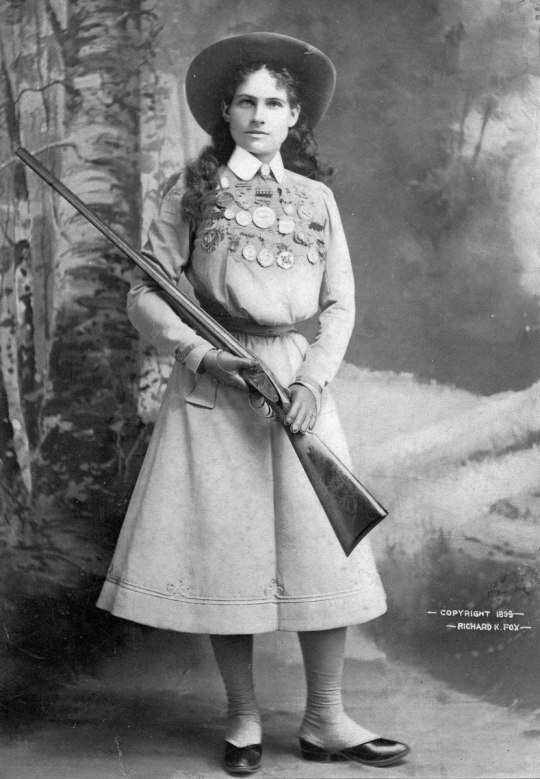
View On WordPress
#Annie Get Your Gun#Annie Oakley#Annie Oakley Foundation#Buffalo Bills Wildwest-Show#Butler and Oakley#Harald Schweim#Little Sure Shot#Phoebe Ann Moses Butler#Phoebe Ann Mosey#Sitting Bull#The Little Sure Shot of the Wild West#US-amerikanische Kunstschützin#Watanya Cecilia#Wilder Westen
0 notes
Photo

Sitting Bull
Sitting Bull (Tatanka Iyotanka, l. c. 1837-1890) was a Hunkpapa Sioux holy man, warrior, leader, and symbol of traditional Sioux values and resistance to the United States' expansionist policies. He is among the best-known Native American chiefs of the 19th century and remains as famous today as he was when he led his people.
He is widely known for his part in the Battle of the Little Bighorn in June 1876 and his later celebrity as a performer in Buffalo Bill's Wild West Show, but, for the Sioux, Sitting Bull is celebrated as the embodiment of the four cardinal virtues of his people: courage, fortitude, generosity, and wisdom. He is also recognized for his refusal to abandon the traditions of his people and his efforts to preserve their culture. Although famous as a holy man, prophet, war chief, and hunter, Sitting Bull was also a poet and composer, as well-known among his people for his rapport with wild animals and herbal knowledge as for his leadership.
He was killed while resisting arrest at the Standing Rock Agency Reservation in South Dakota on 15 December 1890 and was buried at Fort Yates in North Dakota. His remains were exhumed by family members in the 1950s and interred at Mobridge, South Dakota, near where he was thought to have been born. Debate continues over whether these remains are those of Sitting Bull, and historians also offer differing views on his legacy. His reputation as a great leader of his people, however, is unchallenged as he continues to be recognized as a symbol of Native American pride, honor, and traditional values, as well as for his stand against injustice.
Youth & Name
Little is known of Sitting Bull's life before the age of 14. His date of birth, given as 1831, 1832, 1834, or 1837, is debated, as was his birthplace until fairly recently. He is now understood to have been born on the Yellowstone River (known to the Sioux as Elk River) in modern-day Montana and was named Jumping Badger (Hoka Psice). He quickly earned the nickname Slow (Hunkesni), owing, according to scholar Robert. M. Utley, to "his willful and deliberate ways" (6). His father was Chief Sitting Bull of the Hunkpapa Sioux, and his mother was Her-Holy-Door from a respectable Hunkpapa family. He had two sisters and a half-brother but would later adopt others as his brothers, and these are sometimes mistakenly referenced as biological siblings.
Chief Sitting Bull taught his son to ride, hunt, and shoot expertly before the boy was ten years old. Young Slow was an excellent shot with bow and arrow and became so closely associated with horses that his peers joked how he even walked as though he were on horseback. When he was 14, he joined a war party against the Crow and "counted coup" against a Crow warrior, knocking him from his horse where he was then killed by another of the party. For this act of courage – defeating an enemy without killing him – Chief Sitting Bull gave his name to his son and assumed the name Jumping Bull. "Sitting Bull" – Tatanka Iyotanka (literally "Buffalo Who Sits Down") – fit the youth's personality as, "according to fellow tribesmen, suggested an animal possessed of great endurance, his build much admired by the people, and when brought to bay, planted immovably on his haunches to fight on to the death" (Utley, 15).
Later acquaintances and writers would claim the name was given him due to his stubbornness or, according to Sioux writer and physician Charles A. Eastman, that he was given the name after forcing a buffalo calf to sit down. The name was actually given in accordance with the tradition whereby a father passed his own name to his son when the boy was recognized as attaining manhood.
Between the ages of 14 and 20, Sitting Bull led his own war parties, and his name became famous among his enemies as a formidable warrior. Utley describes him at around the age of 20:
A heavy, muscular frame, a big chest, and a large head, he impressed people as short and stocky, although he stood only two inches under six feet. His dark hair, often braided on one side with otter fur and allowed to hang loose on the other, reached his shoulders. A severe part over the center of the scalp glistened with a heavy streak of crimson paint. A low forehead surmounted piercing eyes, a flat nose, and thin lips. Although dexterous afoot and superbly agile mounted, he appeared to some as awkward and even clumsy. (19-20)
Around 1857, in a clash with an Assiniboine band, Sitting Bull spared a 13-year-old boy whom he later adopted as a younger brother. When Sitting Bull's father was killed in battle with the Crow in 1859, the boy took the name Jumping Bull and would remain by Sitting Bull's side for the rest of his life.
Continue reading...
115 notes
·
View notes
Text

Sitting Bull, Lakota Sioux taken in 1885 ...
It was taken by William Notman studios in Montreal, Quebec, Canada, during Buffalo Bill's Wild West Show. The photograph was later copyrighted by D.F. Barry in June 1897 ...
Sitting Bull was a Hunkpapa Lakota chief who led his people in resistance against the United States government's efforts to force them onto reservations. He was killed by Indian police on December 15, 1890, at the age of 59 ...
The photograph you sent is a valuable historical document that shows Sitting Bull in his later years. It is a reminder of the important role he played in Native American history ...
8 notes
·
View notes
Text

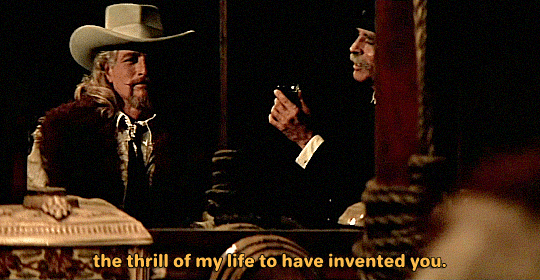
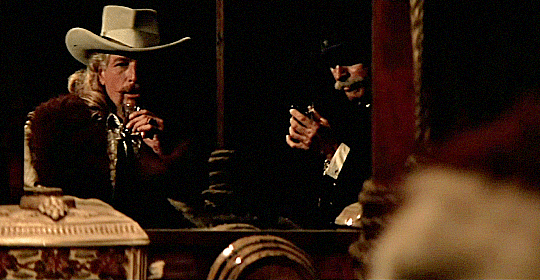

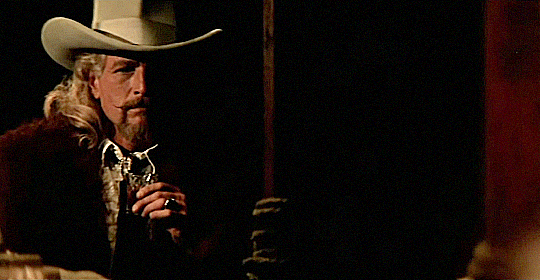
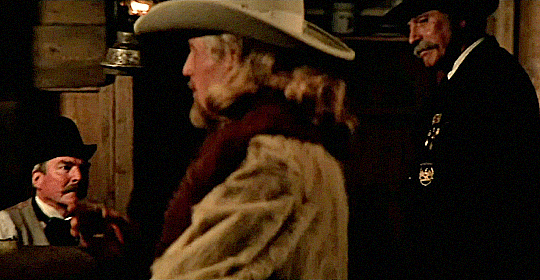
So, one morning, I'm wandering through the camp, and I spot this—this scrawny-lookin' kid, lyin' underneath the wagon. I drag him out, I take one look at him, and I know I can make him a star. I ask him, "What's your name?" He says, "Cody, Bill Cody." I say, "What do you do?" He says, "I'm a scout and a buffalo hunter." Well, I'm really gonna write about somebody, because I got a batch of exciting new plots I might take to Hickok, except I'm mad at him. So I say to the kid, "From now on, your name is Buffalo Bill, and in six months, the whole damn country's gonna know about you."
BUFFALO BILL AND THE INDIANS
or Sitting Bull's History Lesson
— 1976. dir. robert altman, cin. paul lohmann
#buffalo bill and the indians or sitting bull's history lesson#1976#robert altman#paul newman#gifset
4 notes
·
View notes
Text
In summer 1876, the US was preparing elaborate centennial celebrations to display its industrial might, continental reach, and hard-won national unity. But a few days before the July 4th grand finale, disquieting news arrived from the northern Great Plains: the Lakota and their Cheyenne and Arapaho allies had anhilated Custer's Seventh Cavalry, more than two hundred soldiers, in the Little Bighorn Valley in Montana. From then on, American attention was absorbed by the campaign against the Lakotas, which did not end until 1890 at the horror of Wounded Knee. By that point, Lakotas were fixed in the national consciousness as the 'noble and doomed savages' of Buffalo Bill's hugely successful Wild West Show. They become multipurpose icons, immensely useful and marketable as the sounding board of America's shifting feelings of awe, terror, and remorse toward Native American's and their fate. Fictionalized beyond recognition, Sitting Bull's ever-malleable stage lakotas came to symbolize all Indians of the Great Plains, then of the West, then of all of North America, while the other Indian nations were pushed to the margins of collective memory.
-The Comanche Empire, by Pekka Hamalainen
22 notes
·
View notes
Text
"And so, in the summer of 1885, Sitting Bull joined Buffalo Bill's Wild West Show, traveling throughout the United States and into Canada. He drew tremendous crowds. Boos and catcalls sometimes sounded for the "Killer of Custer" but after each show these same people pressed coins upon him for copies of his signed photograph. Sitting Bull gave most of the money away to the band of ragged, hungry boys who seemed to surround him wherever he went. He once told Annie Oakley, another one of the Wild West Show's stars, that he could not understand how white men could be so unmindful of their own poor. 'The white man knows how to make everything,' he said, 'but he does not know how to distribute it.'
--Dee Brown, Bury My Heart At Wounded Knee
27 notes
·
View notes
Photo

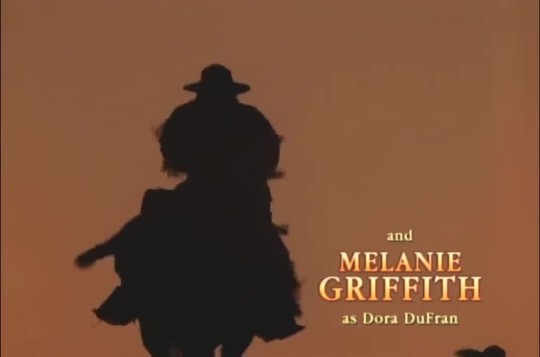




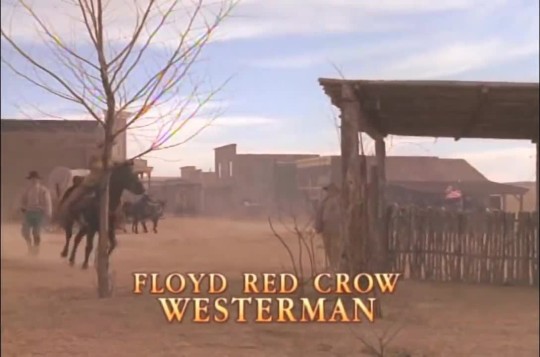



Buffalo Girls - CBS - April 30, 1995 - May 1, 1995
Western Miniseries (2 episodes)
Running Time: 180 minutes total
Stars:
Anjelica Huston as Calamity Jane
Melanie Griffith as Dora DuFran
Sam Elliott as Wild Bill Hickok
Gabriel Byrne as Ted Blue
Peter Coyote as Buffalo Bill Cody
Tracey Walter as Jim Ragg
Jack Palance as Bartle Bone
Charlayne Woodard as Doosie
Reba McEntire as Annie Oakley
Floyd 'Red Crow' Westerman as No Ears
Liev Schreiber as Ogden
Russell Means as Sitting Bull
John Diehl as George Armstrong Custer
Andrew Bicknell as Captain James O’Neill
Paul Lazar as Doc Rames
#Buffalo Girls#TV#Western#Miniseries#1995#CBS#Angelica Huston#Melanie Griffith#Sam Elliott#Reba McEntire#Gabriel Byrne#Peter Coyote#Tracey Walter#Jack Palance
21 notes
·
View notes

